HARMONIC ANALYSIS for Scale Selection and Chord Substitution explored the six harmonic principles for analyzing chord progressions and songs using tradition tonic-dominant harmony and the scale modes.
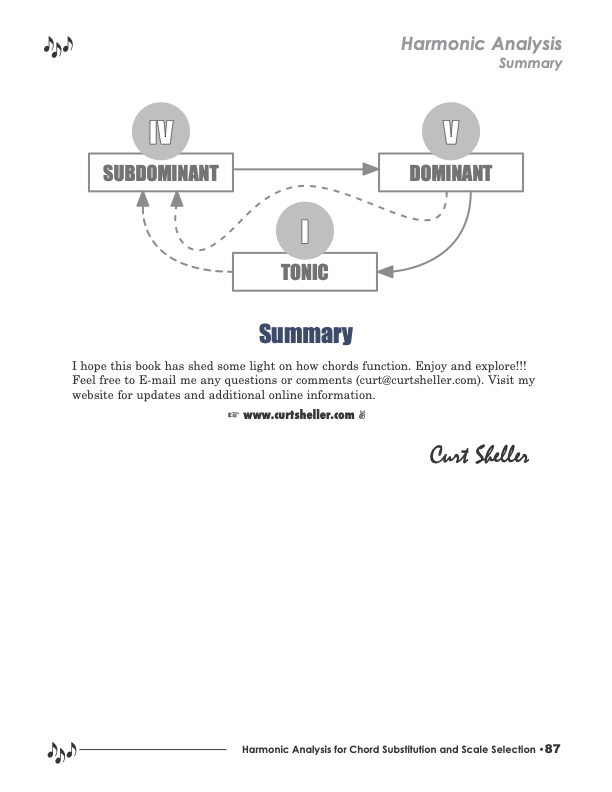
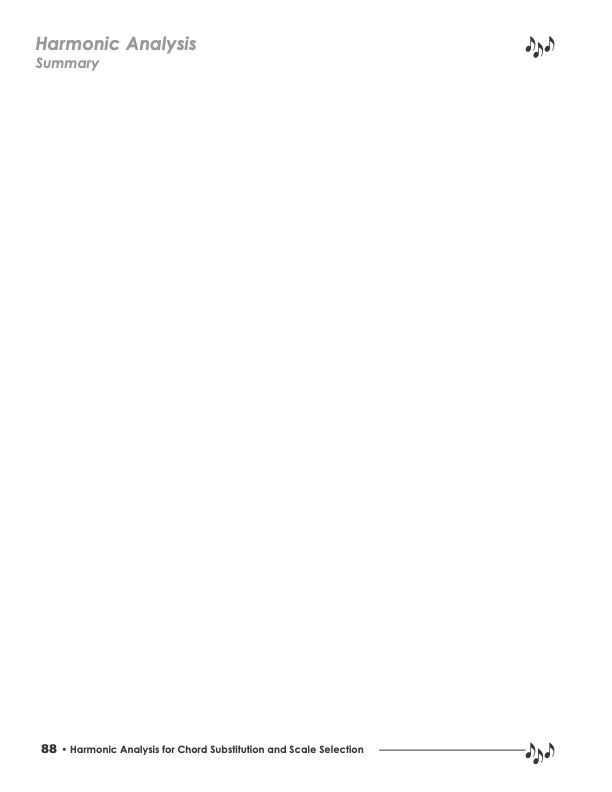


HARMONIC ANALYSIS for Scale Selection and Chord Substitution explored the six harmonic principles for analyzing chord progressions and songs using tradition tonic-dominant harmony and the scale modes.
Available for Premium Site Access Plans Only

This series, is the book Harmonic Analysis for Chord Substitution and Scale Selection by Curt sheller broken out into individual lessons with additional examples and content. Always, the latest version of the book.
Other tonalities can be created using Pentatonic scales and more advanced and exotic scales used in more advanced harmonies. There are many scales and modes possible beyond those covered in this book.
There are several sources that list additional scales and modes.
- Wikipedia is a good place to start: List of Scales and Modes .
HARMONIC ANALYSIS for Scale Selection and Chord Substitution explored the six harmonic principles for analyzing chord progressions and songs using tradition tonic-dominant harmony and the scale modes.
Available for Premium Site Access Plans Only

This series, is the book Harmonic Analysis for Chord Substitution and Scale Selection by Curt sheller broken out into individual lessons with additional examples and content. Always, the latest version of the book.
Other tonalities can be created using Pentatonic scales and more advanced and exotic scales used in more advanced harmonies. There are many scales and modes possible beyond those covered in this book.
There are several sources that list additional scales and modes.
- Wikipedia is a good place to start: List of Scales and Modes .
Harmonic Analysis - Conclusion

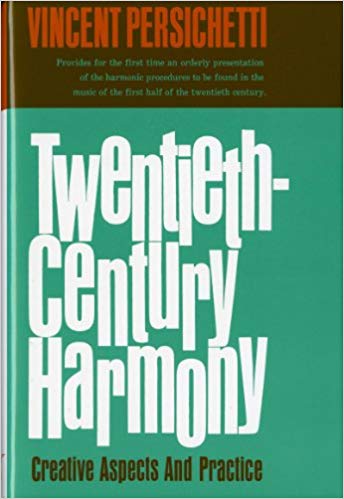
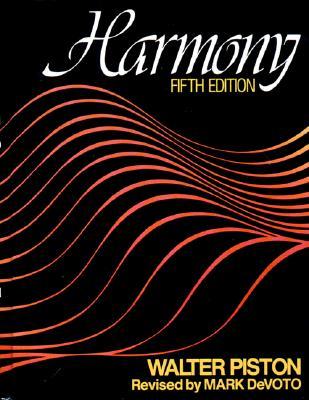
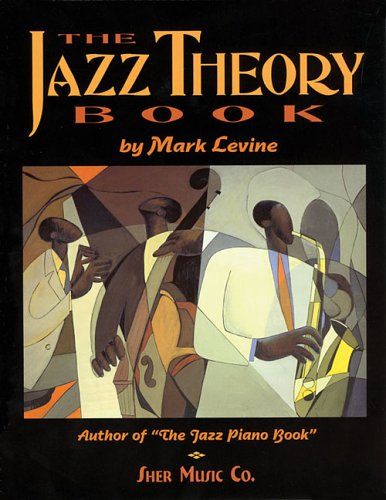
You can't go wrong with owning any or all of these books in your music library. I have all of these and naturally mine.— Curt
Related Lessons, Videos, Lesson Series, Songs, Books & Reference Charts, Resources & Assets, Workshops are below.
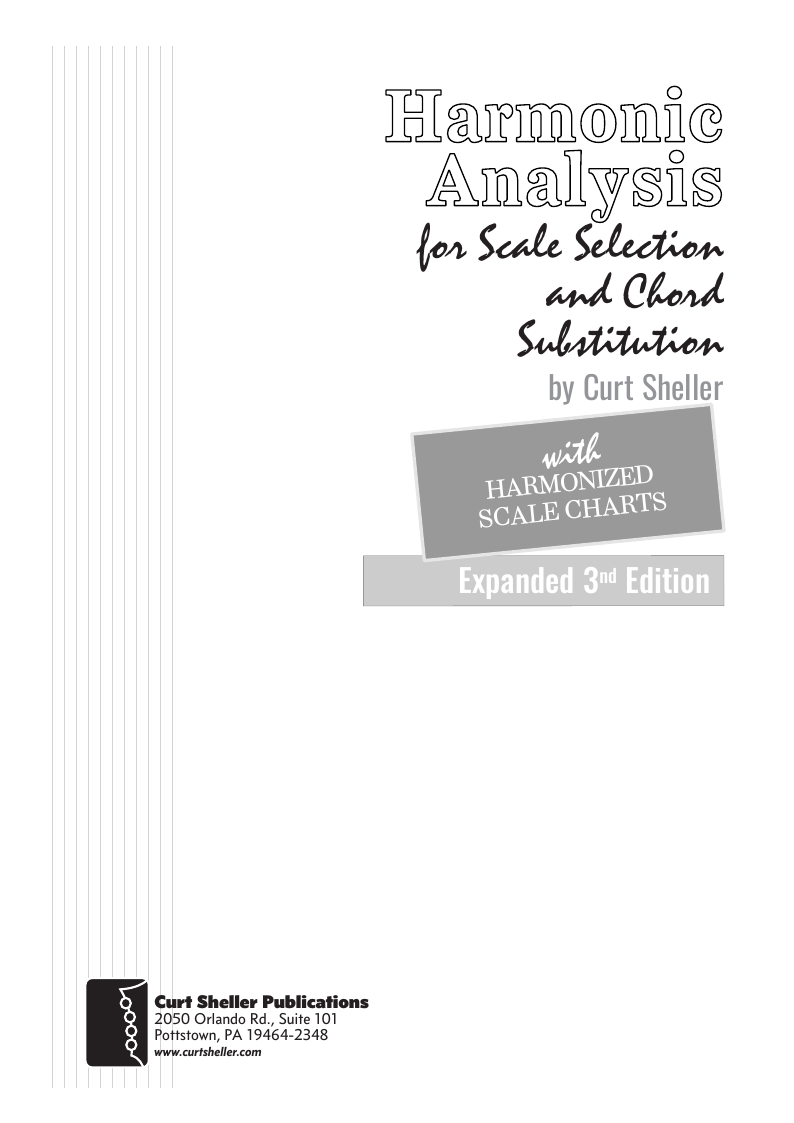
Harmonic Analysis ( HA ) is the process used to determine the harmonic function of chords within a chord progression. A chord progression is defined as a sequence of chords, each chord has a root and has a particular chord type. The relationship of a chord's root to a scale determines its function within that scale's tonality. Once a chord's function is identified, scale selections along with chord and scale substitutions can be made. This process is called Root Movement Analysis ( RMA ). This series of lessons are extracted from my book for use with individual private and on-line students. Each lesson directly corresponds the chapters in my book Harmonic Analysis for Scale Selection and Chord Substitution by Curt Sheller (me).

Harmonic Analysis is the understanding of the functional sequence of chords. It is the process used to analyze the harmonic structure of a progression, song or composition. This analysis is then used to make scale selections for improvisation and chord substitution.

Finally, learn the names of the notes of the ukulele fingerboard in C tuning .

Learn the six fingering principles to navigating the ukulele fingerboard. Fingering is one of the most universal topics. Book: Six Secrets of the Ukulele Fingering

Harmonic Analysis is the understanding of the functional sequence of chords. It is the process used to analyze the harmonic structure of a progression, song or composition. Book: Harmonic Analysis for Scale Selection and Chord Substitution

Learn to read single note melodies in the first/open position is a lot easier than you might think. Book: Ukulele – Reading Music Series – Primer

An organized collection of daily practice and reference material for the contemporary ukulele player for developing the vocabulary and knowledge necessary for single note playing. Book: Daily Practice Material for the Contemporary Ukulele
Checkout the Books & Reference Charts for additional Handy, Dandy Reference Charts.

Ukulele Fingerboard Chart for C Tuning, Low or High G – G C E A

Ukulele Fingerboard Chart for G Tuning, Low or High A – D G B E

A handy reference chart of all 15 major and relative minor key signatures. US Letter 8.5 x 11 sized (ANSI-A), A4
Checkout the Books & Reference Charts for additional Handy, Dandy Reference Charts.



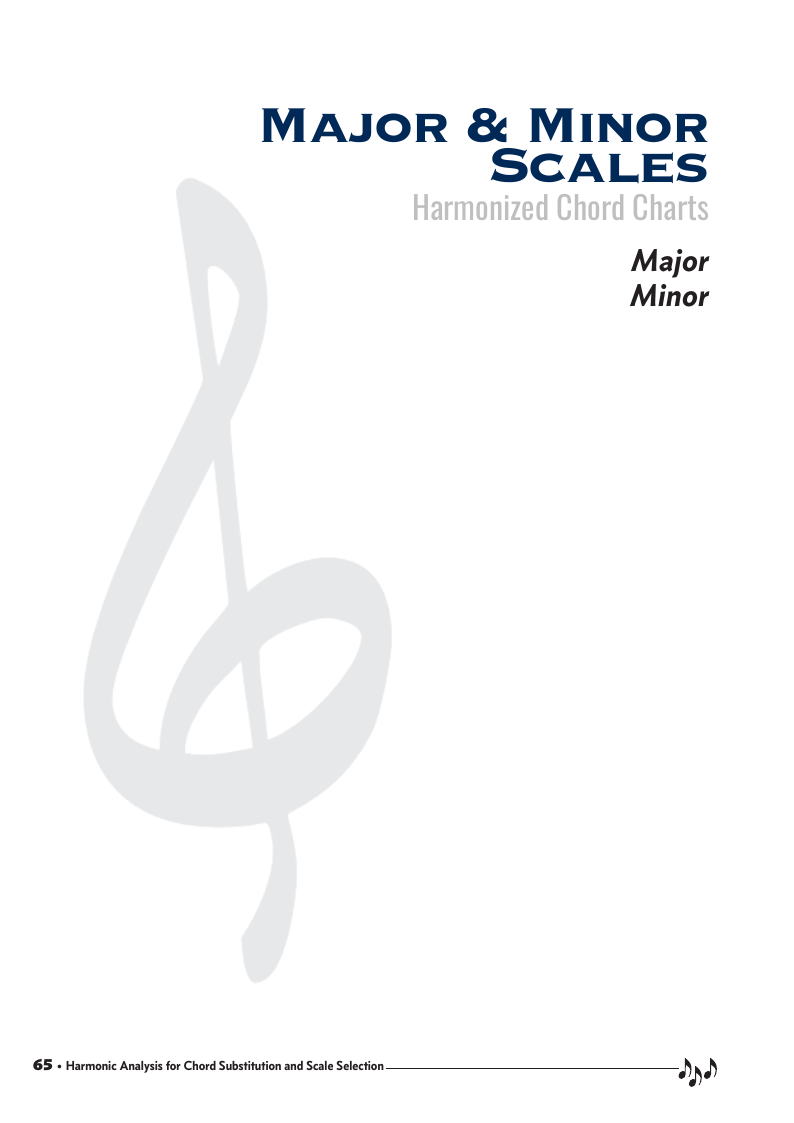
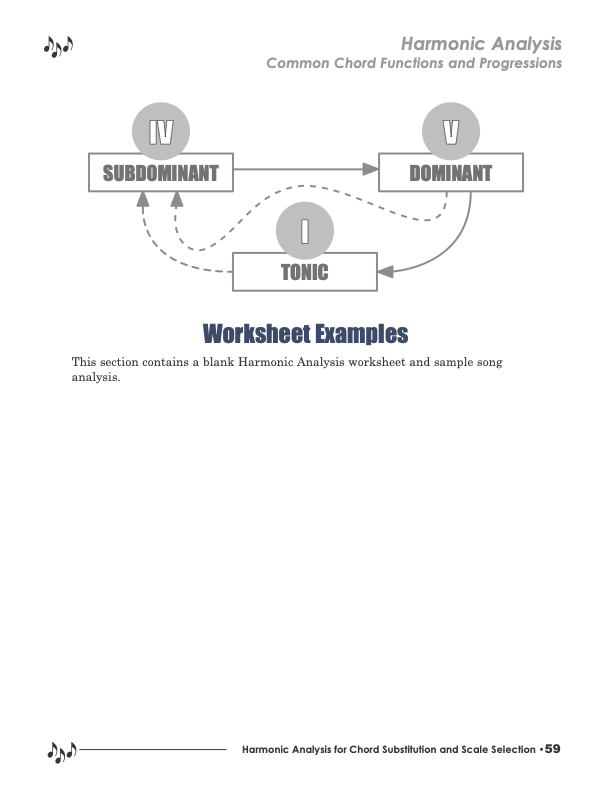
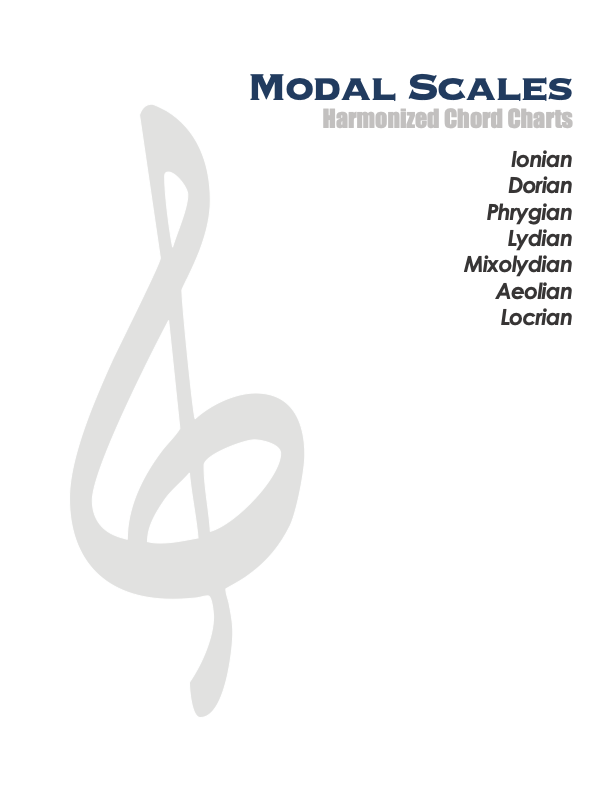
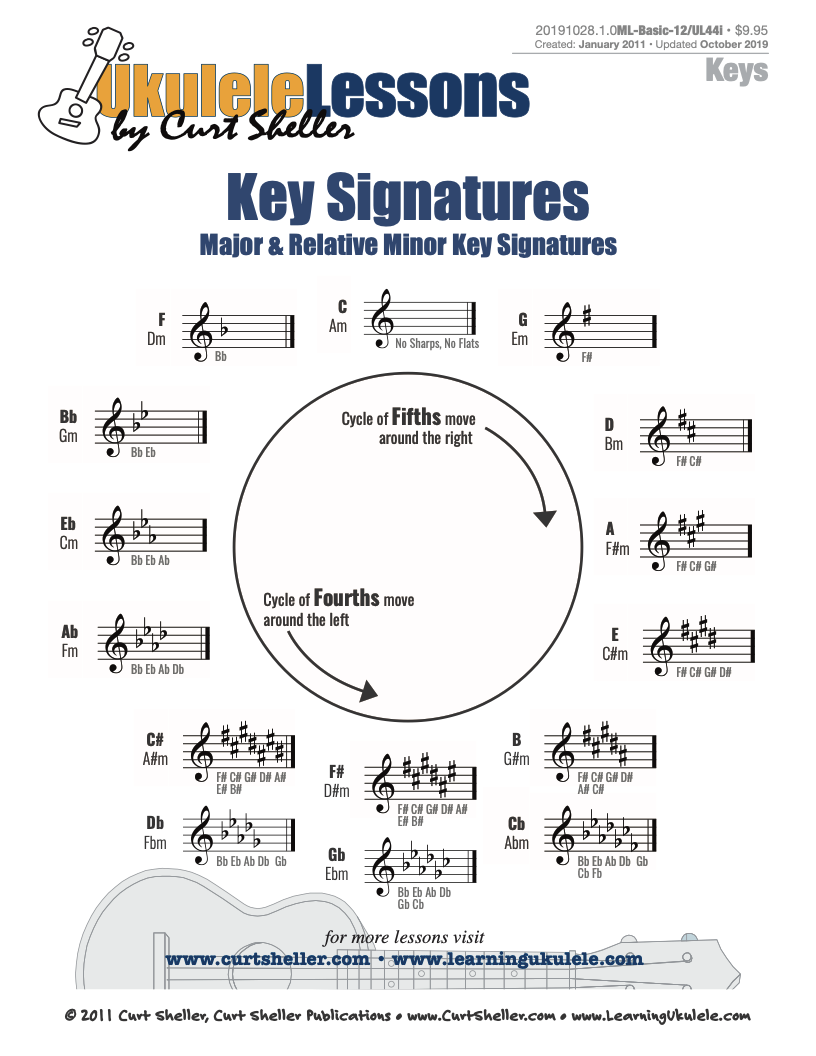
.jpg)